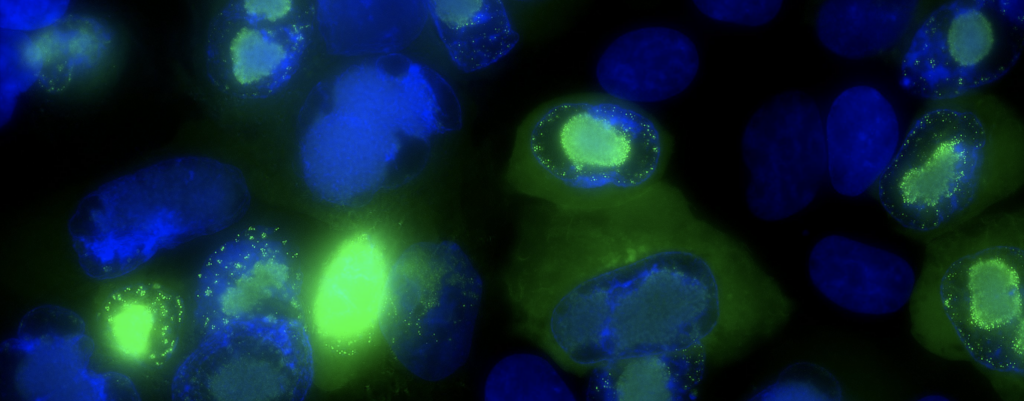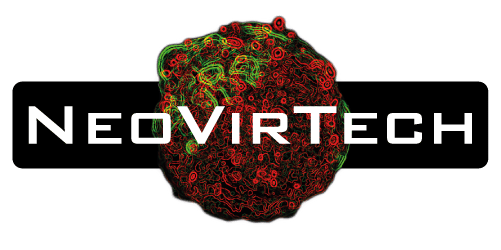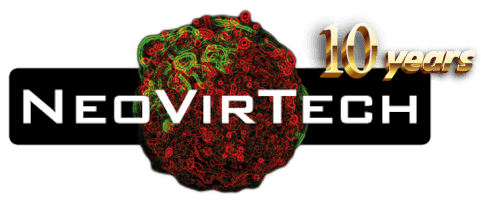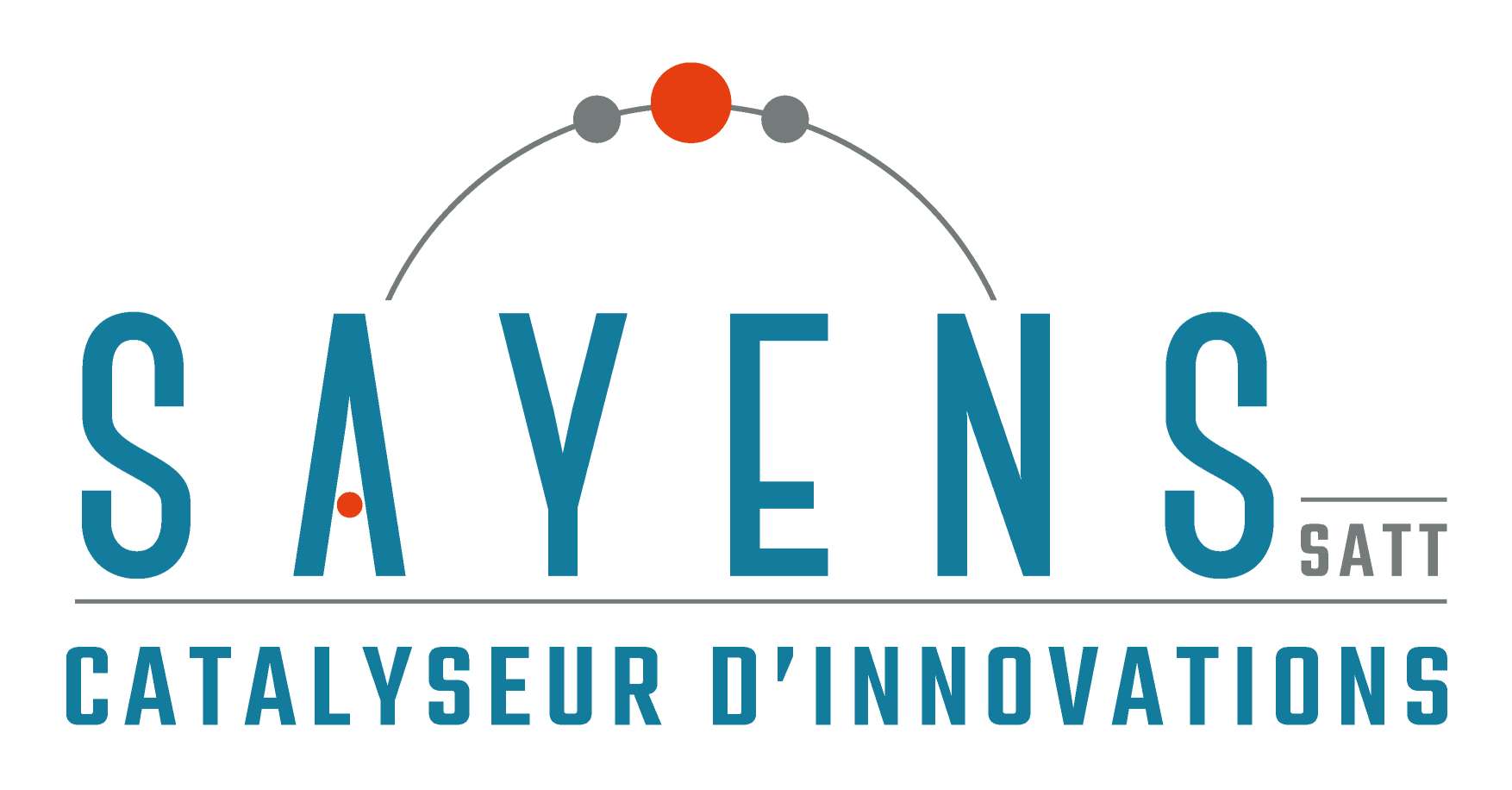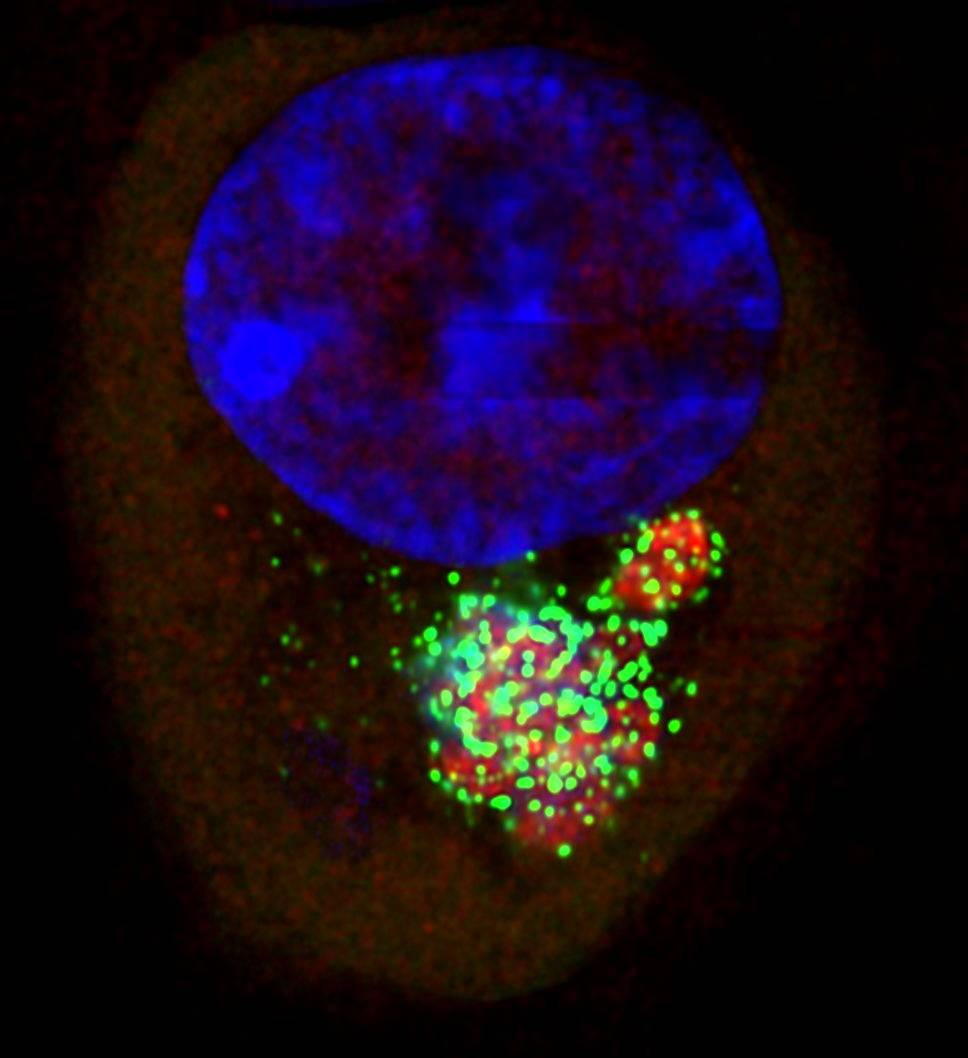Celebrating 11 years of activity in the virology field.
Happy Birthday NeoVirTech ! Today we are celebrating 11 years of activity in the virology field.
NeoVirTech is a biotechnology company developing autofluorescent viruses for antiviral discovery and measurement of disinfection processes in operational conditions. Over the past years, we have developed new research programs, the last one being the development of a platform for the precise measurement of oncolytic virus activities from in vitro to in vivo.
Some facts about us:
Inception: February 6th, 2014. NeoVirTech is created following a maturation program led by Toulouse Tech Transfer and the winning of the I-Lab contest from Ministère chargé de l’Enseignement supérieur et de la Recherche and Bpifrance, Emerging category. Start of the amelioration of the ANCHOR technology to visualize virus infection in living cells.
2015: development of the first autofluorescent Herpesvirus where infection and replication can be visualized in living cells. Collaboration with the Ecole Nationale Vétérinaire de Toulouse for the application of the ANCHOR technology to poxviruses of veterinary interest. Collaboration with Claude Gros team at the ICMUB – Institut de Chimie Moléculaire de l’Université Bourgogne Europe, cover of ACS infectious disease for the discovery of nitrocorrole as antiviral agents. Collaboration with Ecole des Mines d’Alès for the development of autofluorescent baculoviruses.
2016: Development of an ANCHOR tagged oncolytic virus in collaboration with Transgene. Development of the first autofluorescent ANCHOR tagged Adenovirus (hAdv5 ANCHOR), visualization of Adenovirus replication in living cells in collaboration with Harald Wodrich at the university of Bordeaux. NeoVirTech wins the I-Lab contest for innovative companies from MESR BPI France, development category, launching a major program for the capture and labeling of poxviruses. Creation of the first autofluorescent baculovirus with IMT Mines Ales.
2017: Sandrine Kappler-Gratias and Sokunthea Top join the team to work on poxvirus development and screening methods. Several screening campaign are launched. Notably, start of the collaboration with Institut de Chimie Organique et Analytique – ICOA UMR7311 and Luigi Agrofoglio for the development of broad spectrum antivirals. Development of the first ANCHOR autofluorescent lentivirus (lenti-one GEG-Tech ) where transduction and copy number/stability can be visualized in living cells.
2018: Charlotte Quentin-Froignant joins NeoVirTech as a CIFRE PhD student from ANRT – Association Nationale de la Recherche et de la Technologie in collaboration with ENVT to develop tagging systems for animal Herpesviruses. Publication of hCMV and HAdv5 articles in back-to-back in Journal of Virology. Collaboration start with the CRCT to investigate the activity of a specific oncolytic virus. Collaboration start with Francesca Di Nunzio to tag HIV1 with ANCHOR technology.
2019: Collaboration start with Ali Alejo from CISA on the development of autofluorescent AFSV. Cover of RSC Medicinal chemistry for the publication of two articles describing broad spectrum antiviral activity of fluorocorrole on Herpes and poxviruses with ICMUB. Generation of a recombinant ANCHOR EHV1 virus.
2020: Funding from the Agence de l’innovation de défense to develop medical countermeasure in case of poxvirus outbreak. Funding Readynov from La Région Occitanie / Pyrénées-Méditerranée to develop and validate disinfection processes for Covid19. Elie Marcheteau joins the team to work on biodefense program. Collaboration with Syntivia to investigate disinfection efficiency of products directly on living human skin. Publication of HIV-1 ANCHOR and cover of Journal of Virology by Francesca Di Nunzio. Development of imaging systems to visualize SARS-CoV-2 infection.
2021: start of the HSV1 ANCHOR program. collaboration with VirHealth to propose normative disinfection testing. Collaboration with IMACTIV-3Dto image and analyze oncolytic virus infection in 3D using spheroids. Collaboration with Fred Pontvianne to adapt the ANCHOR system to A. Thaliana.
2022: Mpox emergence, collaboration with Institut de Recherche Biomédical des Armées to test antivirals. Cover of Nature microbiology in Dec2022 . Strong activity in disinfection testing and antiviral discovery. Opening of poxvirus in vivoantiviral testing using lethal challenge in mice
2023: development of SARS-CoV-2 imaging on reconstituted bronchial epithelia. Development of the LAVR-289 molecule as a broad spectrum antiviral agent showing animal protection in a lethal VACV poxvirus challenge. Presentation at the International Society for Antiviral Research (ISAR) ICAR 2023. Construction of armed oncolytic viruses and development of an integrated platform for the test of oncolytic viruses from in vitro to in vivo (Perseverance program).
2024: Perseverance program obtains funding from AAP France 2030 in collaboration with CRCT, Imactiv 3D and ENVT. Charlène Lopez Duboscq joins the team to work on in vivo oncolytic virus testing. Closing of the LAVR-289 program, showing 100% survival of mice infected with Mpox. Our VACV ANCHOR virus obtains the “used by French armed forces” label, collaboration with IRBA for risk mitigation in BSL4 laboratories. Collaboration with VirexpR to develop air borne poxvirus contamination methods for management of air quality.
2025: Guillaume Labrousse joins the team to develop innovative 3D models for oncolytic virotherapies. Three papers on LAVR-289 to be submitted.
What a story ! and still ongoing. Thanks to all our collaborators, partners and customers for this wonderful adventure.
